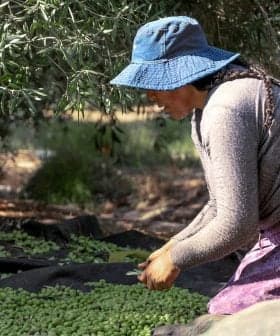In Spain, Exports Grow While Consumption Falls
After drought and disease clouded export forecasts, the Spanish government is optimistic that they are in an upswing. The same is not true for consumption though as research shows Spaniards are perpetually using less olive oil.
Despite a slight increase in olive oil exports from Spain, domestic consumption has decreased significantly over the past six years. Traditional markets like Spain and Italy are losing population and changing eating habits, leading to lower demand for olive oil domestically and internationally. The industry is concerned about the lack of appreciation for olive oil among consumers and the risk this poses to the Mediterranean diet.
Two separate reports out of Spain this month show that while olive oil exports have slightly increased over the first eight months of the 2017/18 harvest season, domestic consumption is lower than it was half a decade ago.
Traditional markets — mainly Spain and Italy — are losing population, changing their eating habits and consumers do not value olive oil sufficiently.
New figures released by Spain’s Ministry of Agriculture, Fisheries and Food show that export turnover exceeded €2 billion ($2.28 billion) between October 2017 and May 2018.
This total is down from previous years, but an improvement from what many in the industry expected for this past harvest season.
“In recent months the difference in the monthly exits of exports has been reduced compared to the previous campaigns,” a spokesperson for the Ministry of Agriculture, Fisheries and Food told Olive Oil Times. “A clear upward trend is observed from the month of February, with a peak in May of 80,053 tons, which explains the growth of exports in this campaign.”
The most significant factor behind the rebound came from record-setting olive pomace oil exports, which broke the previous record set last year, and reached a turnover of €203 million ($235 million). Spain exports 65 percent of the olive pomace oil it produces, compared with 23 percent of other types of olive oils.
“The Spanish olive pomace oil sector is the world leader in production and export,” the spokesperson said. “The data from October 2017 to May 2018, show an improvement in volume and exported turnover, compared to the same period of the previous campaign and the measure of the previous four.”
Significantly, the volume of olive pomace oil exported to other European Union countries also increased. This comes at a time when other types of Spanish olive oil exports to EU countries are decreasing.
This past harvest season, Italy alone imported 42 percent less olive oil than it did last year. Exports have also decreased to the United States and Japan by 24 percent and eight percent, respectively.
“In this campaign, the high production of olive oil, both worldwide and by our community partners […] has reduced their supply needs in the first months of the campaign,” the spokesperson said.
However, China (+18 percent), Brazil (+6 percent) and Australia (+5 percent) have all increased their imports of Spanish oil more than was previously expected. The Ministry of Agriculture, Fisheries and Food expects this trend to continue as other countries’ olive oil stocks run low and they are able to export less.
“[Spain] has the highest availability for export and is the main supplier of international markets,” the spokesperson said. “Therefore, it is foreseeable that in the coming months the growth of exports will continue.”
But while Spanish olive oil exports are forecasted to grow, domestic olive oil consumption has been decreasing for the past half-decade. According to research carried out by Deoleo and the Sondea Institute, Spaniards are consuming about 20 percent less olive oil than they did six years ago.
During the 2011/12 harvest season, Spaniards consumed 574,000 tonnes of olive oil. This figure has since fallen to 470,000 tonnes, which is the provisional figure for the 2017/18 harvest season.
“Since 2012 the consumption of olive oil per capita in Spain has fallen,” Francisco Rionda, the director of marketing at Deoleo, said. “This is a very dangerous trend because of the importance of [consumption to] the sector for a producing country like Spain and because it puts the Mediterranean diet at risk.”
Rionda told Olive Oil Times that several factors have contributed to the decrease in olive oil consumption in Spain and that other markets are shrinking for the same reasons.
“Traditional markets — mainly Spain and Italy — are losing population, changing their eating habits and consumers do not value olive oil sufficiently,” Rionda said. “They continue buying it mainly for price and replacing it with other [edible oils].”
“This same lack of appreciation also occurs in international markets where consumption is fairly flat, without growth,” he added.
Due to the current demographics in Europe, North America, and even China, population decreases over the coming decades are inevitable. Without more people to drive up demand, Rionda acknowledges that it will fall on producers to better educate consumers about why they should not be replacing olive oil with other edible oils in spite of the price difference.
“The consumer throughout the world should value the product more and because of that we should value the industry more,” he said. “The consumer mistrusts the quality and is used to buying promotions, but it is not informed. There is no investment in communication. There is no innovation.”
For Rionda, some of this falls on the shoulders of a younger generation of producers and chefs. He is more concerned that they are not using olive oil in the same ways previous generations have.
“The consumption of olive oil will continue to fall,” Rionda warned. “If the new generations of chefs do not incorporate it into their habits as is already happening, the loss of consumption is imminent.









